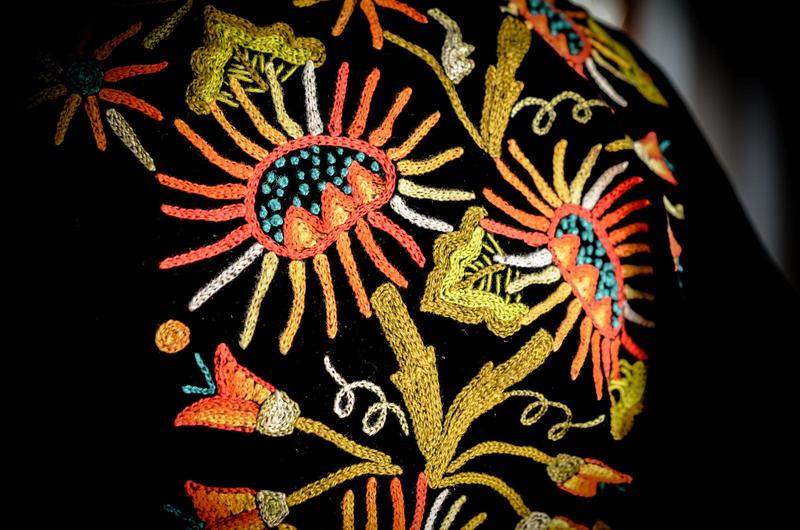
Modern Quality: Where Do We Get Beautiful Things?
If you go to any major chain or big box store, much of the stuff available to buy is cheaply made and ugly.
As a result, many people surround themselves with ugly things that won't last—because it's the stuff that's readily available. It's cheap. It's there.
What if there was a better option?
Why it matters: Psychology says we are happier and healthier when surrounded by beauty. Nature, natural materials, natural lighting. Our surroundings impact how we think and feel—the architecture, the landscapes, the materials. The effects can be subtle, but they add up. Surround yourself with the ugly, plain, and industrial, and you get negative effects instead.
Plus, cheaply made things break sooner and have to be replaced. You may end up spending more overall as a result. You contribute to throwaway culture—the materialist cult that treats everything as disposable. You help fill the landfills.
(Read: Recovering Beauty in Modern Life)
Here are a couple examples.
Why do we have this:

And not this?

Why do we have this:

And not this?

Or rather—why is it so hard to find stuff like the latter, because you see it once in a while, but the former is everywhere?
Why is there a lack of beauty?
Last time my husband and I watched Lord of the Rings, we lamented the lack of Elvish architecture and beauty in our lives. Why don't we have the intricate details and craftsmanship in all our own clothes, dwellings, tools, and towns? When you look at old photos, and especially old paintings of what people and places used to look like, there was more of it than there is today.
In part, it may be that before, materials were expensive but labor was cheap; now, materials are cheap but labor is expensive. But we could produce pretty materials; we can mass produce beautiful things, but we don't. Why not?
In part, it's the rise in short-term thinking. (Long post on that forthcoming.) It's the focus on maximizing short-term gains, nevermind what it might cost future generations. If you're not thinking ahead, not thinking generationally, then why do things need to last? Why not consume and throw away? Why bother with quality?
(Read: The Farmer's Lament: A Poem)
In part, it's that mass production means less customization and detail (unlike the embroidery and detail in so many traditional clothing, for instance, or the carving on buildings, and the ornamentation.) It's the attitude that cheaper is better. It's a lack of recognition that we're missing something.
It's bauhaus. It's consumerism, materialism, and industrialism.
In part, it's that people are losing autonomy and don't realize that they don't need permission to make beautiful things, to live in beautiful places, to enhance their homes, yards, and neighborhoods.
No doubt there are many other factors, too. This is just a few of the more easily apparent.
What do we do instead?
You don't need permission.
It doesn't matter what the dominant culture says or what you were taught in school or what top people in the field say.
Beauty is possible. Quality is possible. It's usually more expensive up front, but if you can afford it, it'll last longer and make you happier. Upgrade up front.
Where do you find beauty and quality? Locally, usually. Find local craftsmen, local artists, local makers. For example, when we moved into our house five years ago, we decided to splurge on real furniture. We'd been getting by with hand-me-down couches and folding tables—cheap grad student fare—and it was time for an upgrade. We were adults, after all! We browsed furniture stores. Most of them were disappointing. Then we found a store filled with mostly locally-made wooden furniture—real wood, not plywood and a thin veneer. The kind of furniture you buy once and have for the rest of your life. We spent a lot; the store probably loved us. But we got amazing bookcases, a beautiful kitchen table, and solid hardwood chairs.
(Read: What Is Localism? Seven Ways Localism Benefits Communities)
Find commercial-quality stuff, not consumer-quality. When we were looking for sturdy shelving for a utility space, we bought commercial restaurant-quality metal shelves, because everything consumer-grade looked like it'd fall apart under its own weight. We wanted shelves that could hold up, shelves we wouldn't have to replace in five years.
Look for older stuff, too, as it may have been made to a higher standard. A friend of mine bought an old chest freezer—some 30 or 40 years old—because it was better quality than the ones they make now.
Check the "buy it once" subreddit for advice on the best brands. For instance, when we were replacing our can opened yet again, Randy did his research, and this time, we have a can opener that shouldn't break for another couple decades.
You can learn to make, or modify, things. When looking for nice clothes, I opted to make my own linen wrap skirt—complete with detailed embroidery! To decorate my floors, I made my own braided rag rugs. And so on.
Put in the effort and you'll reap the rewards.


How We Managed Our First Honey Harvest
